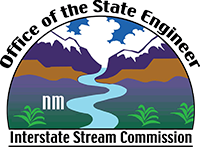Interstate Stream Commission
- OSE Home
- About ISC
- Basins
- Rio Grande River Basin
- Geomorphic and Sedimentologic Investigations
Geomorphic and Sedimentologic Investigations of the Middle Rio Grande Between Cochiti Dam and Elephant Butte Reservoir
The geomorphology and sedimentology of the Middle Rio Grande between Cochiti Dam and Elephant Butte Reservoir have been investigated to: (1) evaluate the historic and present characteristics of the river, (2) identify the natural and human-induced factors that control the present day river characteristics, and (3) evaluate existing opinions regarding the causes of channel narrowing, armoring of the bed and incision of the river. The investigation was based on a review of published and unpublished literature and data, and limited aerial and field reconnaissance. The Middle Rio Grande can be subdivided into 9 reaches based on the spatial distribution of historic sediment storage zones within the valley, and their geomorphic and geologic controls that include bedrock outcrops, active tectonic uplift (Belen-Socorro Uplift) and tributary alluvial fans (Tables 1 and 2). Changes in the hydrology and sediment supply to the Rio Grande following construction of the flood and sediment control dams in the 1970s have been used to explain changes in channel morphology, such as planform change, channel narrowing, channel incision, and changes in bed material composition and channel armoring (Crawford et al., 1993; Graf, 1994; Lagasse, 1994; Baird, 1989, 2001). However, because of the length of time over which changes have been on going (since at least the 1800's), as well as the wide range of physical changes that have been imposed on the system, there is a very real possibility for confusion regarding cause(s) and effect(s).
